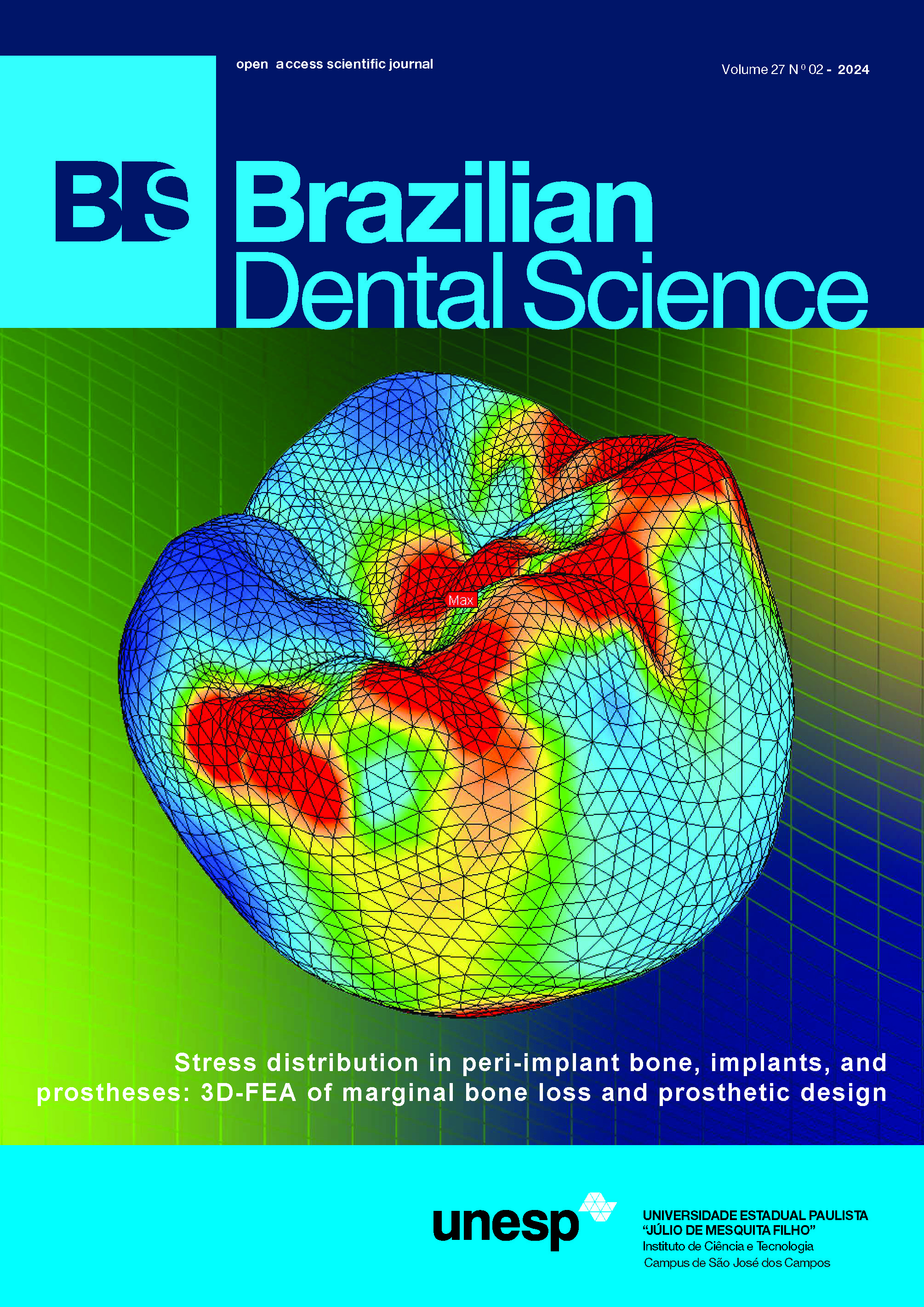Remineralizing potential of a fluoride varnish modified by bioactive nanoparticles
DOI:
https://doi.org/10.4322/bds.2024.e4246Resumo
Objective: Evaluate a fluoride varnish modified by nanostructures with the bioactive qualities of silica (SiO2) and niobium pentoxide (Nb2O5), testing its remineralizing potential by surface hardness (SH) and energydispersive X-ray spectroscopy (EDX). Material and Methods: Bovine enamel specimens (6×4×2mm) were prepared and submitted to a demineralizing/remineralizing process to produce a subsurface caries-like lesion, evaluated by transversal microradiography image (TMR) and subsequently distributed randomly into three groups: fluoride varnish (VZ); fluoride varnish + silica gelatin (VZ-SiO2) and fluoride varnish + niobium nanoparticles (VZ-Nb2O5). The specimens were subjected to a pH-cycling demineralizing/remineralizing process for 7 days at 37ºC. The %SH loss and %SH recovery (after the pH-cycling regimen) were calculated (n=10/group). The Ca/P weight ratio before and after the pH-cycling regimen was evaluated through SEM/EDX. A two-way ANOVA followed by Tukey’s test (p<0.05) was performed for hardness and EDX. Results: TMR image showed the formation of an artificial subsurface lesion, and a significant SH increase was observed in the VZ-Nb2O5 group (p<0.05). Regarding the %SHL and %SHR, the VZ-Nb2O5 and VZ-SiO2 were significantly different compared to the VZ group (p<0.001), but VZ-Nb2O5 presented higher values. The Ca/P ratio showed that blocks treated with VZ-SiO2 and VZ-Nb2O5 showed greater ion deposition, particularly in the presence of Nb. Conclusion: The bioactivity of niobium facilitated greater interaction between the enamel and the varnish, leading to a slow release of nanoparticles and a longer-lasting remineralizing effect.
KEYWORDS
Fluorides; Nanostructures; Niobium; Operative dentistry; Tooth remineralization.
Downloads
Downloads
Publicado
Como Citar
Edição
Seção
Licença
TRANSFERÊNCIA DE DIREITOS AUTORAIS E DECLARAÇÃO DE RESPONSABILIDADE
Toda a propriedade de direitos autorais do artigo "____________________________________________________________________" é transferido do autor(es) para a CIÊNCIA ODONTOLÓGICA BRASILEIRA, no caso do trabalho ser publicado. O artigo não foi publicado em outro lugar e não foi submetido simultaneamente para publicação em outra revista.
Vimos por meio deste, atestar que trabalho é original e não apresenta dados manipulados, fraude ou plágio. Fizemos contribuição científica significativa para o estudo e estamos cientes dos dados apresentados e de acordo com a versão final do artigo. Assumimos total responsabilidade pelos aspectos éticos do estudo.
Este texto deve ser impresso e assinado por todos os autores. A versão digitalizada deverá ser apresentada como arquivo suplementar durante o processo de submissão.




























